#common red damselfly
Text
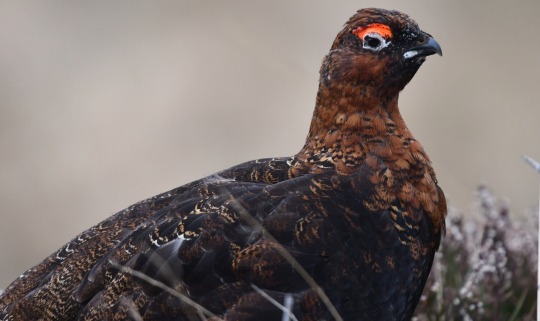

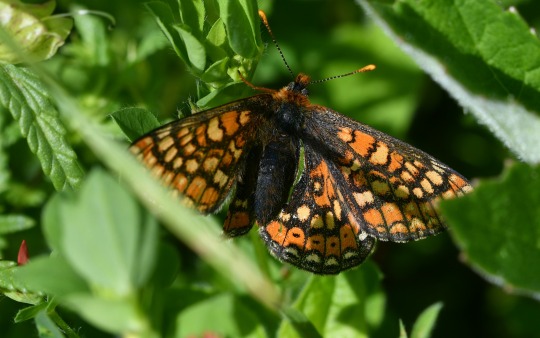

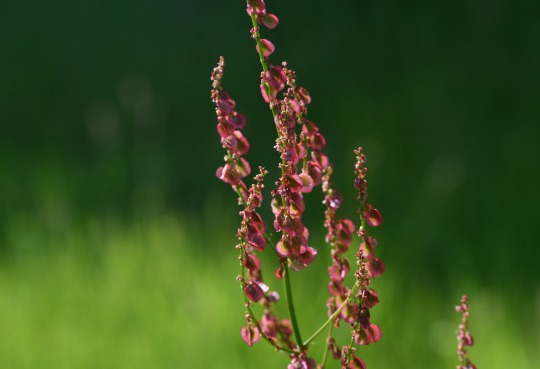
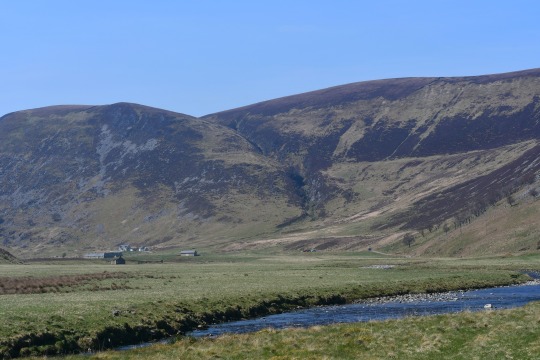
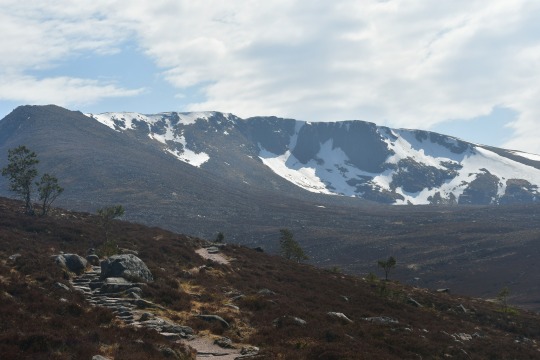
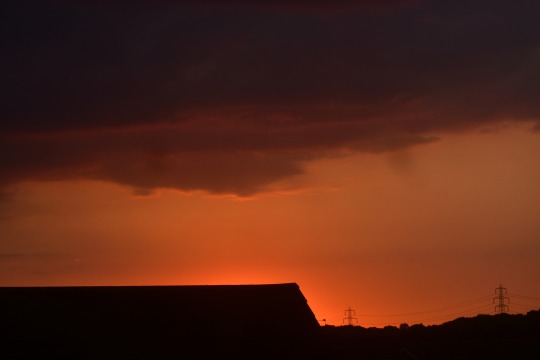
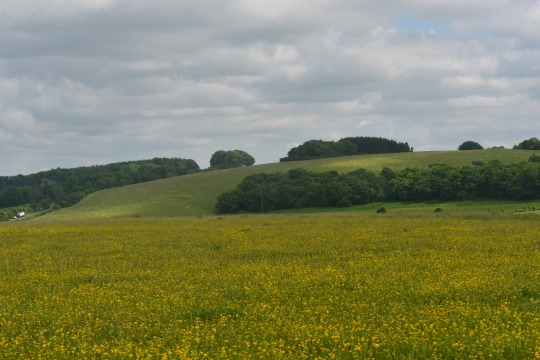
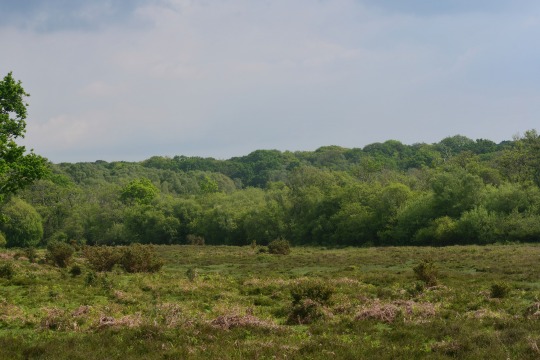
Five of my favourite flora and fauna photos I took in May 2024, five of my favourite landscape photos I took in May 2024 and month summary
The photos are of; Red Grouse at Lochindorb, Red Squirrel at Dell Woods, Marsh Fritillary at Magdalen Hill, Azure Damselfly and sorrel at Lakeside Country Park, views at Strathdearn and Cairn Gorm, sunset at home and views at Magdalen Hill and Pig Bush in the New Forest.
May was another epic, packed and brilliant wildlife watching and photo month for me. Beginning in the midst of our sensational Scotland adventure many of the bird highlights of the holiday were about to unfold in May's early days seeing Black Grouse, precious Dipper, wonderful Golden Eagle, exquisite summer plumage Slavonian Grebe and Ring Ouzel with stars of the trip first seen inside April on the trip and before that enjoyed again such as White-tailed Eagle, Osprey, smashing views of stunning summer plumage Black-throated Diver, Pink-footed Geese, Red Grouse, Common Sandpiper, Goldeneye, Redstart and Willow Warbler. It was very busy for birds when we returned home to Hampshire this month with Swifts at a few locations, Garganey, Reed Warbler, Whimbrel, Garden Warbler, Hobby, Spotted Flycatcher, Tree Pipit, Roseate Tern and valuable chances to see Stone Curlew again on a guided walk added to my year list mixing migratory species I needed to see and stardust birds; another epitomising this the amazing times I saw Cuckoos this month in Hampshire a bird I heard so much throughout the Scotland trip it's always a privilege to see them and I had some breathtaking experiences with them. Whitethroat, Yellowhammer, Sedge Warbler, Great Crested Grebes, Moorhen including chicks seen well with Greylag and Canada Goose goslings enjoyed a lot on patch at Lakeside Country Park and Red Kite were other stars across the month in what was a fantastic month of birds.
May is one of my busiest months of the year as I've still got plenty of bird species to look for and the butterfly season really gets going. It was an incredible butterfly month for me with dynamic and colourful species seen including Large White, Dingy Skipper, Duke of Burgundy, Pearl-bordered Fritillary, Grizzled Skipper, Painted Lady, Small Heath, Brown Argus, Green Hairstreak, Marsh Fritillary, Small Blue, Common Blue, Adonis Blue, quite early Meadow Brown, Small Tortoiseshell, Red Admiral, Peacock, Orange Tip and Speckled Wood getting my butterfly year into a great place. It was a great moth month too with loads of species seen including The Streamer, Garden Carpet, Mint moth, Burnet Companion, Brown Silver-line, Common Heath, Common Carpet, Pale Prominent, Yellow Shells, Hook-streaked Grass-Veneer, elegant Mother Shiptons, Speckled Yellow, Silver Y and Five-spot Burnet seen.
It was a top dragonfly and damselfly month with some super species seen to get me started including Common Blue Damselfly, Azure Damselfly, Blue-tailed Damselfly, Large Red Damselfly, Banded Demoiselle, Beautiful Demoiselle, Hairy Dragonfly and Broad-bodied Chaser and thrilling moments seeing my first ever Downy Emerald at Bentley Wood. It was a real awakening of beetles for me this month with Violet Oil beetle, Green Tiger beetle and Dor beetle seen in Scotland and at Bentley Wood for the green tiger and many Swollen-thighed beetles and Red-headed Cardinal beetles, Oedemera lurida, Cantharis rustica, Cryptocephalus aureolus, Common Malachite, Woodland Dor beetle, Black-striped Longhorn beetle and Garden Chafer enjoyed once home. It was a really good mammal month with Red Squirrel, Red Deer, Brown Hare (seen in Hampshire too) and Stoat seen in Scotland, Roe Deers seen nicely across the month, Fallow Deer and New Forest Pony foals and cattle at Lakeside charming seasonal sights.
It was a wonderful month of plants again with special flower species seen as they took over meadows and other areas including wood sorrel, coltsfoot, oxeye daisies, yellow rattle, buttercups, greater celandine, spurge, early purple orchid, common twayblade, white helloborine, common spotted orchid, burnt-tip orchids, speedwell, forget-me-not, yellow iris, eyebright, lousewort, wood avens, meadow crane's-bill, grass vetchling, foxgloves, crimson clover, red clover, white clover, black and spotted medick, comfrey, cuckooflower, tormentil, bugle, yellow pimpernel, silverweed cinquefoil, sainfoin, fox-and-cubs, mignonette, common rock-rose, hemlock water-dropwort and bird's-foot trefoil. I took in some mesmerising views and sky scenes this month. Have a good June all.
#photography#red grouse#red squirrel#sorrel#azure damselfly#marsh fritillary#2024#may#stoat#roe deer#common malachite beetle#yellow pimpernel#common twayblade#green hairstreak#swollen-thighed beetle#adonis blue#osprey#cuckoo#five-spot burnet#mother shipton#outdoors#walking#birdwatching#butterflies#europe#england#scotland#uk
2 notes
·
View notes
Text
Every Current Formula 1 Driver But I Decided They Were All Bugs
No Thoughts, Head Empty, Only Insects I Enjoyed From My Single Entomology Class Several Years Ago. Sorry to folks from outside the states. Most of these are like. my local critters.
Max Verstappen - Appalachian Jewelwing, Calopteryx angustipennis I have no reasoning behind this one. He just gives me the vibes of a damselfly kinda man.
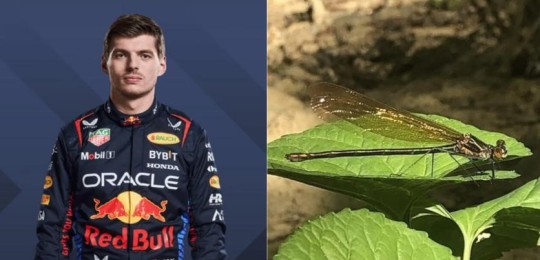
Sergio Pérez - Synoeca Cyanea, a species of warrior wasp, or just the Synoeca genus again, literally no justification besides he's on the dark blue team and I just really like these wasps. Please read the Synoeca wikipedia page. they are SO cool.

Lewis Hamilton - Violet Carpenter Bee, Xylocopa violacea fashionable! cool lookin bee!
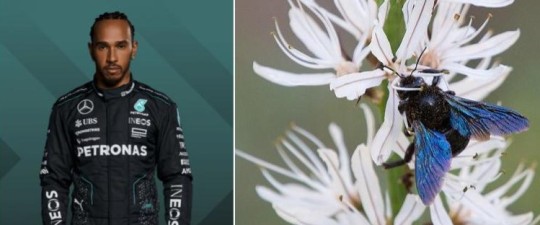
George Russell - Blue Hawker, Aeshna cyanea

Charles Leclerc - Cattle Killer/Cow Killer, Dasymutilla occidentalis (letting my south midwestern hick jump OUT here. most folks call em velvet ants)
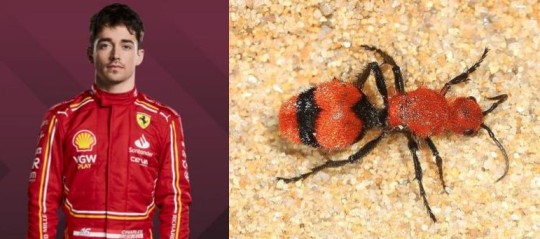
Carlos Sainz - Red Admiral, Vanessa atalanta
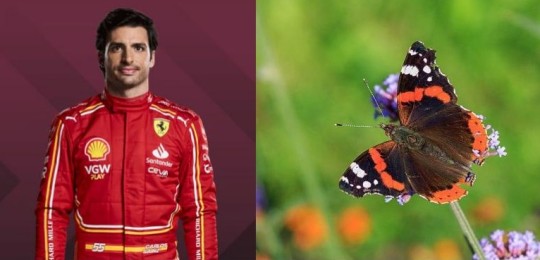
Lando Norris - Walker's Cicada, Megatibicen pronotalis this is NOT meant to be a drag I actually love these freakishly loud animals but he just gives bright green cicada energy.

Oscar Piastri - Green Carpenter Bee, Xylocopa aerata cop out? yeah. good bee and something that feels correct? yes.

Fernando Alonso - Mourning Cloak, Nymphalis antiopa i love these fuckin bugs. absolute freaks of nature. they live for like a full year and they're always wandering around and getting up to something. plus they're very distinguished.
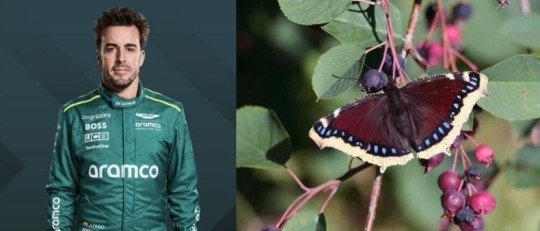
Lance Stroll - Common Buckeye, Junonia coenia I'm not even gonna elaborate on this one.

Valtteri Bottas - Eastern Cicada Hawk, Sphecius speciosus I just think they're neat!
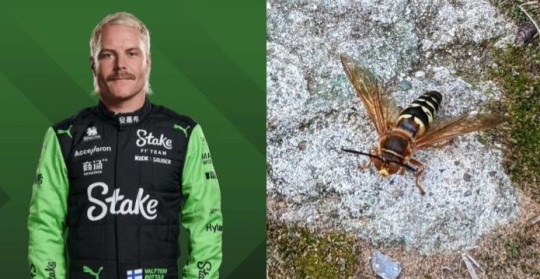
Zhou Guanyu - Ebony Jewelwing, Calopteryx maculata blatant favoritism here. The ebony jewelwing is perhaps my all time favorite bug from home :) (its also v stylish)
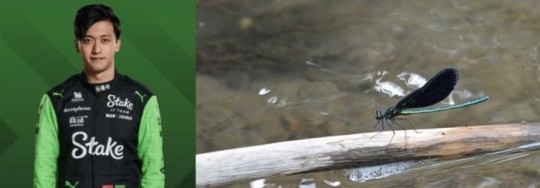
Esteban Ocon - Chinese Mantis, Tenodera sinensis a noble creature that frequently scares the life out of me when i find one outside my window. Why the fuck are you so long. I appreciate u anyway.

Pierre Gasly - European Field Cricket, Gryllus campestris he just *feels* a bit crickety. Idk what to tell u man.

Kevin Magnussen - Halloween Beetle (or in America, the Japanese Lady Bug), Harmonia axyridis the most determined little bastard in the animal kingdom. They WILL get into your apartment through that microscopic sliver in the window.

Nico Hulkenberg - Green June Beetle, Cotinis nitida idk dude he just serves local scarab

Daniel Ricciardo - Black-And-Yellow Mud Dauber, Sceliphron caementarium im sure you are all noticing how much i love wasps by now. i was SO brave not making this a wasp only post. if ur american and a hick (hey girl(gn) hey) you'll know these guys From Constantly Being In Your Car's Inner Workings

Yuki Tsunoda - Bullet Ant, Paraponera clavata tiny but mighty!!!!! (short king solidarity)
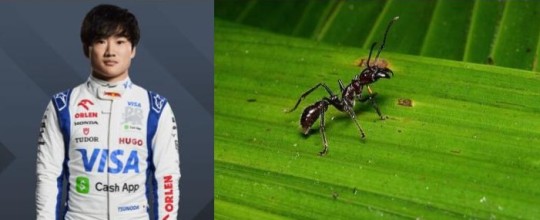
Alex Albon - Great Black Wasp, Sphex pensylvanicus yet more blatant favoritism for my faves. Yes this post is so i can assign the williams boys and zg my fave types of local bugs. Anyway. this is one of the best wasps in the world. if u see her irl please stop for a moment to appreciate her. she's usually a docile species but she is very big and i love her. (good hunter too)
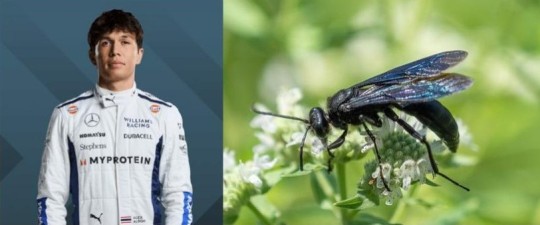
Logan Sargeant - Blue Dasher, Pachydiplax longipennis the ultimate late spring and all of summer insect of america. voted america's sweetheart of every local body of water eight millionth year in a row!!!! one of the best dragonflies in the country and i am serious!!! if u live in north america this summer, find a LAKE, a POND, A RIVER, perhaps even a CREEK!!!!!! A POOL WILL EVEN GET YOU! you'll find these folks. at current you might catch mating flight season!!! anyway. these are crazy good hunters and they're a beautiful little baby blue shade. anyway. logan and the rest of williams should go huntin for these when he gets back to florida. think it would fix em.
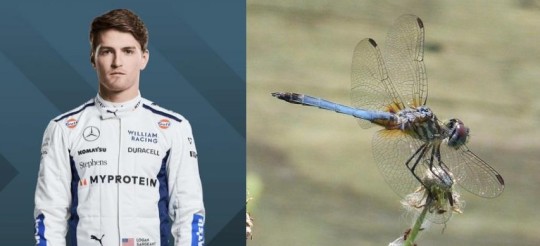
#zoomies posting#kazoo noises#babys first f1 season#sports posting#i said id do it and i was very serious#also sorry for the funky ordering i did this like in order that i thought of them and then had to match the teammates to whoever i did firs#this is why williams are the last ones here. i could NOT decide which wasp alex was gonna be
42 notes
·
View notes
Text
ANIMAL AU LIST
Alabama - black bear
Alaska - Moose
Arizona - Ring-tailed Cat
Arkansas - Mockingbird
California - Brown bear
Colorado - Mountain Goat
Connecticut - Grey Wolf
Delaware - Grey Fox
Florida - Alligator
Georgia - North Atlantic right Whale
Hawaii - Hawaiian monk seal
Idaho - Idaho Giant salamander
Illinois - Northern Cardinal
Indiana - Say's Firefly
Iowa - Hog/pig
Kansas - Western meadowlark
Kentucky - Appaloosa (Horse)
Louisiana - Pelican
Maine - Maine coon
Maryland - Crab
Massachusetts - Tabby Cat
Michigan - White tailed deer
Minnesota - Common loon
Mississippi - Red fox
Missouri - Missouri Mule
Montana - Mourning cloak butterfly
Nebraska - Skunk
Nevada - Vivid Dancer damselfly
New Hampshire - Red tailed hawk
New Jersey - Fruit bat
New Mexico - New Mexico whiptail lizard
New York - Mouse
North Carolina - plott hound
North Dakota - nokota Pike (Horse)
Ohio - buckeye chuck
Oklahoma - Scissor-tailed flycatcher
Oregon - beaver
Pennsylvania - eagle
Rhode Island - Rhode Island red chicken
South Carolina - wood duck
South Dakota - coyote
Tennessee - Tennessee walking horse
Texas - Texas Longhorn
Utah - Bee
Vermont - Labrador
Virginia - Virginia Opossum
Washington - Olympic Marmot
West Virginia - Moth
Wisconsin - American Badger
Wyoming - Bison
D.C. - wood thrush
Gov - Snake
CDC - Dove
ITS DONE
FINALLY
AHHHHHHHHHHHHHH-
#wttt#wttsh#Animal au wttt#do with this list as you will#I did my best to keep it balanced but still special for every state lol
11 notes
·
View notes
Text
November 21st, 2023


Buzzer Midge (Chironomus plumosus)
Distribution: Found throughout the northern hemisphere, but more common in northern areas.
Habitat: Lives in and around freshwater bodies of water, such as lakes and marshes.
Diet: Adults do not feed; larvae are detritivores, feeding on aquatic debris such as organic matter and algae.
Description: Buzzer midges are best known for forming thick swarms during mating season; while they don't bite, these clouds of midges are often focused along scenic lakes, which are apparently a nuisance. Larvae are aquatic, nicknamed blood worms for their elongated red bodies. These "worms" form are filter feeders which form U-shaped tubed in muddy substrates, through which they circulate a water current to draw in debris.
Larvae are an important source of food in their habitats, and are preyed on by many species: backswimmers, pondskaters, frogs and toads, boatmen, dragonflies, damselflies, newts, diving beetles, redstarts, water scorpions and other midge species.
(Images by Jeff Delonge and Ivo Antušek)
1 note
·
View note
Photo

Common bluetail damselfly (Ischnura heterosticta) by Red Wolf
0 notes
Photo

Finally for this week, another insect that I spotted hanging around the cars, this time a Large Red Damselfly, something like 3-4cm long. It seemed to like sitting on the rear light cluster of our Ford Focus! These damselflies are quite common, unlike the Small Red which is nationally scarce.
There are very few ponds in our neighbourhood (as far as I am aware), could it be that this has come from the small pond in our back garden? It’s a nice thought!
That’s all for this week, have a good week.
0 notes
Text
Character Concept: Arthurian Swarmkeeper Ranger
For when you’ve been staring longingly at gorgeous early-20th-century Art Nouveau jewellery, and its beautiful obsession with dragonflies, and abruptly you want to be a gorgeous, pre-raphaelite-looking Arthurian maiden with a swarm of magic, art nouveau dragonflies, and happily D&D can oblige:
Character Sheet: Yvaine of the Greenfold
Name: Yvaine of the Greenfold
Race: Eladrin (usually summer or spring)
Age: 95
Background: Hermit
Class/Level: Ranger 3 (Swarmkeeper)
Statistics: Strength 8, Dexterity 16, Constitution 14, Intelligence 10, Wisdom 16, Charisma 10
Personality: Secretive, somewhat mischievous, gleeful and serene
Ideal: Freedom. One should do as one pleases, and accept the consequences.
Bond: I have learned of a great evil, and I must stand against it.
Flaw: I am, and have always been, less than diplomatic, which is a dangerous trait in the fey courts.
Skills & Languages:
Skills: Insight, Medicine, Perception, Religion, Stealth*, Survival
Languages: Common, Elvish, Sylvan, Celestial, Draconic
Tools: herbalism kit, thieves’ tools, navigator’s tools
Traits, Feats and Background/Class Features: Darkvision (60ft), Fey Ancestry, Keen Senses, Trance (allows change season plus learn two tool/weapon proficiencies until next rest), Fey Step (currently Summer), Discovery, Favoured Foe, Deft Explorer: Canny (Stealth expertise, 2 languages), Fighting Style: Archery, Spellcasting, Gathered Swarm (dragonflies & damselflies), Swarmkeeper Magic, Primal Awareness
Spells:
Cantrips: Mage Hand
Spells: Faerie Fire, Speak with Beasts, Ensnaring Strike, Cure Wounds, Longstrider
Description: Picture the most Pre-Raphaelite, John Williams Waterhouse, Art Nouveau, Arthurian mythology elf maid ever - long red hair, shimmery green-gold arm-slit cloak, elegant leather armour over deep green trousers and jacket, with a swarm of delicate, jewelled, green-gold dragonflies and damselflies flitting around her like a cloud.
History:
Yvaine of the Greenfold was not, at any point, exiled from the courts of the summer fey for being secretive and mischievous and blithely undiplomatic at unfortunate junctures. Absolutely not. It was merely that, for her own sake, she desired light and water and greenery, and peace from all those flittery people and ridiculously lethal games of one-up-man-ship. There was no exile, allow her to be absolutely clear. She only needed time to clear her head, and find a little peace where the feywild met the material plane. A forest glade, a sparkling pool. A touch of Eldath’s grace. The dance of green, jewelled dragonflies in the dappled sunshine. Is that not all one might need? The touch of a gentler, vaster thing, to soothe all that is secret and wounded in one’s soul?
Alas. Even in soothing, self-imposed exile, there are secrets to tarnish one’s peace. Tendrils of darkness, that slither even through dappled sunshine. Visions in the water, a whisper of Eldath’s warning. Dark things, looming in the shadows. Perhaps the goddess thought that Yvaine might like to be secretive and mischievous and thoroughly undiplomatic in their general direction?
That is how she shall interpret it, anyway. There’s only so much peace a soul can stand. Perhaps a little excitement will do for hers just as well.
#d&d#character concepts#rangers#swarmkeeper ranger#arthurian#feywild#eladrin#art nouveau#dragonflies
11 notes
·
View notes
Photo






the high fay
so in the “moderen days” of music box fay are relatively rare, but in the past they had a vast global empire. this was mostly by the general dominance of the high fay.
high fay are all relatively human sized and shaped, have wings, have no tail, have silvery iridescent blood, and are hemephrodites. so any gender presentation is purely from personal preference. (the most common genders for fay are fluid)
all fay are heaven kin, meaning they are naturally born with magic.
for high fay they have the innate abilities of, self levitation, glamor (gender presentation, wing visibility ) , tree talk (its their language), commune with spirits, personal size manipulation (they have a minimum and maximum size limits), and travel spell. then the high fay also tend to inherit magic from the kind of fay they have and many family lines of fay also tend to have unique abilities.
types of high fay:
pix- human like, dragonfly like wings with color closer to the base same color as their eyes and magic (a common trait among fay with translucent wings) . can have antenna 4 wings
selkies- large non-translucent wings, usually brown in color, often have antenna. 4 wings.
changeling- torn looking wings, black sclera. 2-6 wings
sellie- large, translucent, bird like wing tips. silvery freckles are common. 2 wings
unsellie- wings split into three tapered points. dark hair is common, black sclera, 2 wings
merrow- translucent thin wings with ends like the leaves of ginkgo trees, red hair is very common. 2-4 wings
undine- top wing curves while bottom wing tapers into two points. some non-translucent patterns on top wing is common. 4 wings
sprite-somewhat short bee like wings. often have a deformity that causes them to be at sharp angles.can have antenna. 4 wings
picling- partly non-translucent wings the secondary wing is of greatly reduced size. 4 wings
manos- smaller, almond shaped wings with visible vains. not uncommon for them to have light reflecting/ silvery freckles, 4 wings
alcin- skinny semi-translucent damselfly like wings, colorful spots, 8 wings
redcap- very sharp teeth, jagged wing tips, and small underwings often have splits. red hair. 6 wings
bluecap- blue hair, thick stubby wings with many tapered ends, 6 wings, semi translucent. often have greying extermities.
druid- partly non translucent wings, that split into “tail” bits. often have antenna. 4 wings. often have darkend extremities.
hobgoblins- sharp teeth, wasp shaped mostly non-translucent wings, the top wing is the shorter of the two, grey skinned extremities. 4 wings
alp- sharp teeth, black sclera, stubby translucent wings, the top pair appears like wasp wings the bottom set are more like bee wings. 6 wings
sylth- top wing is sharply curved, semi-translucent. 4 wings.
abilities of high fay races
pix- create/ access void spaces
selkies- size transmutations
changeling- stronger glamor, disguise looks
sellie- light weapons+ projections
unsellie- shadow stalking
merrow- magical sight
undine- water control
sprite- telekinesis
picling- short distance teleportation
manos- invisibility + light manipulation
alcin- elemental defense
redcap- blood control
bluecap- finding
druid- plant control
hobgoblins- barriers
alp- dream manipulation
sylth- healing + regeneration.
high fay can have horns, though its a bit more unusual. they can have round, pointed or hooded ears. they tend to have oddly shaped pupils. they usually look similar to the people in the region they live in.
(notes on pronunciation, picling: pik-ling. manos: maw-n-os. alcin: al-u-sin)
some well known high fay clans(family) magics
(the delights) compelling. (the bulle) ranged/ sharp shooter sight. (the brazens) fire. (the cakes) emotion manipulation, (the macaves) acid, (the lollirans) ice, (the chissps) earth manipulations. ect..
the fay have had a turbulent past, and honestly a not so steller present. as many fay live in isolated villages within the endless forest or remains from the old empire they once had. sickness, war and disaster all diminished their power.
the very strict law system they have is not helping in increasing thir population and any old “civilized” glends they still have tend to be quite stuck in thir ways. this includes their general dislike for impures (hybreeds, loners and outlaws)
the fay featured in the pictures are
top (l-r) white vine {sprite, vodka {pix, bulle {alp, princess cake {druid , normandy pheasant {pix.
[top left of square] expresso (though she prefers expressi as it sounds cute)
[bottom left square] bifty (the drink b-520
top right square] Turkish delight (current fairy queen)
bottom right of square] bloody marry {red cap
bottom (l-r) lemonade {manos, java {impure, half-pix
#worldbuilding#fairy aesthetic#fairy#conlang#fantasy#fantasy race#fantasy culture#fantasy clothing#red dress#fairy wings#wings#fantasy history#black eyes#half dragon#levitating#draw the squad#pandoramusicbox
7 notes
·
View notes
Photo










https://cosmosmagazine.com/science/biology/ten-tiny-but-terrifying-micro-monsters/
Human Flea
Common Blue Butterfly Larva
Mosquito Larva
Head Louse
Mayfly Larva
Diving Beetle Larva
Springtail
Brown Carpet Beetle Larva
Large Red Damselfly
5 notes
·
View notes
Text
Alphabetized lists of ACNH Bugs and Fish, with no extra text or photos, for model collectors making checklists! Just paste the lists into your notes or word app and convert to checklist style.
Agrias Butterfly
Ant
Atlas Moth
Bagworm
Banded Dragonfly
Bell Cricket
Blue Weevil Beetle
Brown Cicada
Centipede
Cicada Shell
Citrus Long-horned Beetle
Common Bluebottle
Common Butterfly
Cricket
Cyclommatus Stag
Damselfly
Darner Dragonfly
Diving Beetle
Drone Beetle
Dung Beetle
Earth-boring Dung Beetle
Emperor Butterfly
Evening Cicada
Firefly
Flea
Fly
Giant Cicada
Giant Stag
Giant Water Bug
Giraffe Stag
Golden Stag
Goliath Beetle
Grasshopper
Great Purple Emperor
Hermit Crab
Honeybee
Horned Atlas
Horned Dynastid
Horned Elephant
Horned Herucles
Jewel Beetle
Ladybug
Long Locust
Madagascan Sunset Moth
Man-faced Stink Bug
Mantis
Migratory Locust
Miyama Stag
Mole Cricket
Monach Butterfly
Mosquito
Moth
Orchid Mantis
Paper Kite Butterfly
Peacock Butterfly
Pill Bug
Pondskater
Queen Alexandra's Birdwing
Rainbow Stag
Raja Brooke's Birdwing
Red Dragonfly
Rice Grasshopper
Robust Cicada
Rosalia Batesi Beetle
Saw Stag
Scarab Beetle
Scorpion
Snail
Spider
Stinkbug
Tarantula
Tiger Beetle
Tiger Butterfly
Violin Beetle
Walker Cicada
Walking Leaf
Walking Stick
Wasp
Wharf Roach
Yellow Butterfly
--------------------
Anchovy
Angelfish
Arapaima
Arowana
Barred Knifejaw
Barreleye
Betta
Bitterling
Black Bass
Blowfish
Blue Marlin
Bluegill
Butterfly Fish
Carp
Catfish
Char
Cherry Salmon
Clown Fish
Coelacanth
Crawfish
Crucian Carp
Dab
Dace
Dorado
Football Fish
Freshwater Goby
Frog
Gar
Giant Snakehead
Giant Trevally
Golden Trout
Goldfish
Great White Shark
Guppy
Hammerhead Shark
Horse Mackerel
Killifish
King Salmon
Koi
Loach
Mahi-mahi
Mitten Crab
Moray Eel
Napoleonfish
Neon Tetra
Nibble Fish
Oarfish
Ocean Sunfish
Olive Flounder
Pale Chub
Pike
Piranha
Pond Smelt
Pop-eyed Goldfish
Puffer Fish
Rainbowfish
Ranchu Goldfish
Ray
Red Snapper
Ribbon Eel
Saddled Bichir
Salmon
Saw Shark
Sea Bass
Sea Butterfly
Sea Horse
Snapping Turtle
Soft-shelled Turtle
Squid
Stringfish
Sturgeon
Suckerfish
Surgeonfish
Sweetfish
Tadpole
Tilapia
Tuna
Whale Shark
Yellow Perch
Zebra Turkeyfish
#acnh#acnh collector#acnh models#maybe im the only audience for this but i couldnt find an easy one online so here :)#completionist
6 notes
·
View notes
Text
// Alright, here’s a take. Not a drabble but a headcanon. Why do bugs in HK or Bug Fables have lips?? (putting under read more bc my rambles are LONG, sparing any of my followers if they aren’t curious)
What if that was primarily a predatory evolution and following mimicry for self defense?
It sounds really weird- but hear me out. When bugs were becoming more.. Civil, it was likely herbivores and already colonial species first. Predators tend to be more solo, especially in the world of arthropods. That would've made it particularly difficult for anything with obviously dangerous mandibles or fangs to integrate into early societies or hunt prey involved in them. Something out of the ordinary was automatically a red flag.
What ends up happening? More and more bugs, over time, have smaller mandibles, more soft & emotive faces, things that feel less threatening. But lips have more advantage than making a more genuine smile; hiding the inside of your mouth well means you can hide all sorts of nasty hardware in there. Allowing predators to hide large, sharp fangs and teeth in place of mandibles, getting closer easier. In a sense this was camouflage too, with some bugs that already had features like that.
Then this predatory, aggressive adaptation became more of a normal thing as others adapted it as a form of batesian mimicry; copying a more dangerous animal to ward off potential threats. Those who had these softer features could be average bugs.. Or.. They could be predators hiding dangerous teeth or venomous bites. Making it less likely for other threats to attack them on the fear that they could be much more well armed than they seem.
Overall, it led to it being a common trait, especially since the mimics better hid the true predators by being harmless fakes. Harder to pick out the problem and avoid it. At the same time, these predatory bugs also had easier times genuinely grouping up with others, since the fakes and originals with these traits proved it wasn't a guaranteed sign of danger- just that it could be.
This doesn't apply to all species, arachnids and wasps especially seem to ignore this. That makes sense, given they are either uncommon, still primarily solo even with higher intelligence, or they were among the groups that became more civil among preexisting colonies, putting no further drive for evolution to stabilize their structure or be fooled by mimics.
A good example where this strategy DID work is moths/butterflies, and damselflies/dragonflies.
Moths/butterflies have soft, “friendly” features, and given their mostly liquid or very soft diets as adults, there is no mimicry. They're genuinely harmless in that sense and look the part!
Damselflies/dragonflies on the other hand, by nature are highly aggressive predators both as nymphs and adults. (IRL they're known to hunt pretty much anything smaller than them. Mosquitoes, bees, ants, flies, worms, moths, butterflies, nymphs will even take out small tadpoles & fish if given the chance)
They ARE packing some dangerous teeth! This makes it much harder to gauge encounters, especially if one isn’t well read about other species of bugs. Some have adapted to different lifestyles since gaining higher thought too- some originally herbivorous species are omnivores to deal with shortage of plants and nectar in the wastelands. Or maybe certain groups that could be omnivores have led more herbivorous lifestyles since easy food is readily available in a kingdom. Carnivores could be mimics trying to look scary, or genuinely about to take a hand off with a single bite. It’s hard to tell; making a tangle of adaptions to have lips or otherwise well hidden mouths an accidentally common, yet still often advantageous trait.
2 notes
·
View notes
Text



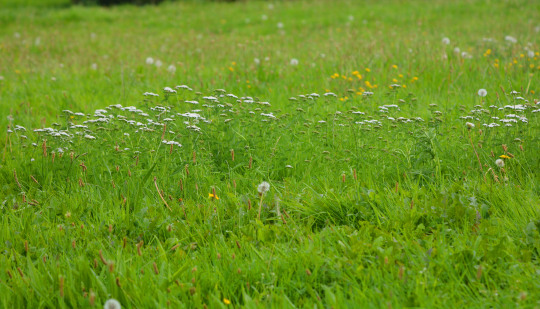



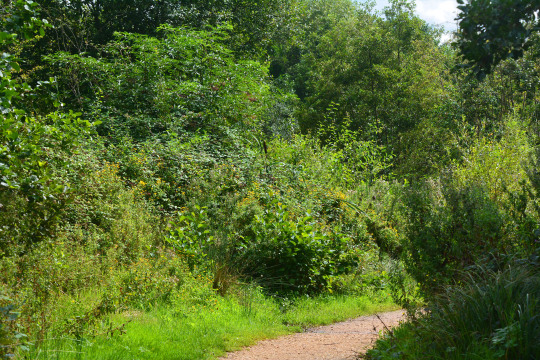
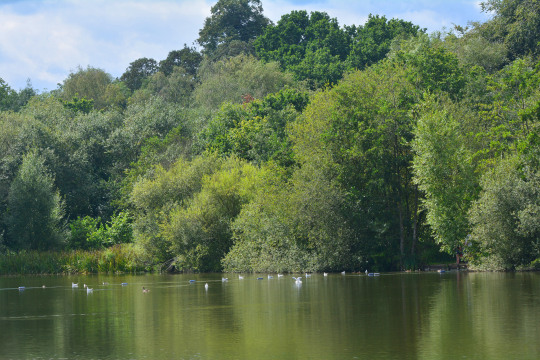
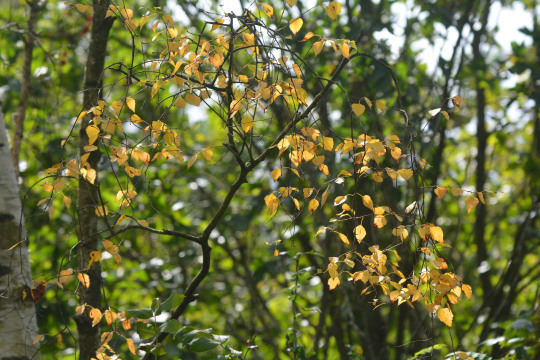
25/08/23-Lakeside and home
Photos taken in this set: 1. An eyecatching Blue-tailed Damselfly which I enjoyed seeing at Lakeside, it's been great to see these increase in number recently, a lovely damselfly species. 2. A nice Light Brown Apple moth in the kitchen last night. 3. Woodpigeon in the sun this evening. 4. Some yarrow and dandelions on the green out the front, the tall clumps of yarrow a nice prominent sight on the green out the front from home of late. 5. Carrot by the flower bed area on the way to Lakeside. 6, 8 and 9. Vibrant views on the lovely Lakeside lunch time walk. 7. One of two charming Common Darters I enjoyed seeing landing in the southern fenced off area, I saw a fair few of both sexes on the walk as a whole. This one settled and I enjoyed a glorious few minutes watching and photographing it. It was lovely to just focus on looking at it and take in many details, the way it landed with its pellucid wings covering its eyes reminded me of a wedding veil and the eyes themselves were a source of my fascination, complex patterns and shaped like half a planet I felt privileged to see them move around to take in surroundings. This was a big moment feeling the joy of having a connection with nature, for a short time getting to share this insect's world. And on my first time out since Tuesday as I just felt well enough to do a walk in the midst of my bug this was a moment I needed with a classic summer species I'm loving seeing the past few weeks. 10. Some yellow leaves at Lakeside.
Another big point with insects in the southern fenced off area was seeing my first Small Heath here since spring, with Red Admiral, many marvelous views of Meadow Brown, Speckled Wood and Migrant Hawker over the lake seen well. Great Crested Grebe, Carrion Crow and Magpie with Moorhen and Chiffchaff heard were other avian highlights of an enjoyable walk. Collared Dove, Starlings and Goldfinch including young were good to enjoy at home today. It was also nice to see a Small Dusty Wave moth again before bed last night. Bird's-foot trefoil, fresh vetch, dock, red bartsia, St. John's-wort, white and broad-leaved clover, great willowherb, purple loosestrife, immaculate looking bramble flower and some gorgeous lady's bedstraw which is fresh in the southern fenced off area were other key flowers seen on my lunch time walk. Ripe ruby guelder rose berries, hawthorn and rose hips and blackberries were nice to see.
#photography#common darter#great willowherb#lady's bedstraw#red admiral#blackberries#chiffchaff#great crested grebe#darter#blue-tailed damselfly#magpie#carrion crow#birdwatching#insects#insect#friday#walk#walking#lakeside country park#lakeside#outdoors#connection#nature#eyes#wings#red#europe#colours#flowers#green
3 notes
·
View notes
Text
lmao i was talkin about bugs with my mamma and i managed to name over 100 bugs/arthropods that i’ve seen with my own eyes. i’m so proud of my bug-seeing. <3
big dipper firefly
brown chafer
japanese beetle
cucumber beetle
seven spotted ladybug
rove beetle
eastern hercules beetle
six spotted neolema beetle
brown marmorated stink bug
eastern leaf-footed bug
leaf hopper
dog day cicada
periodical cicada
waterboatmen
backswimmers
wheel bug
thread-legged assassin bug
pselliopus assassin bug
polyphemus moth
pandora sphinx moth
luna moth
tiger moth
snowy urola moth
hummingbird moth
nessus sphinx moth
somber carpet moth
wavy lined emerald moth (caterpillar)
eastern tent moth
eastern tent moth caterpillar
snowberry clearwing moth
monarch butterfly
tiger swallowtail butterfly
black swallowtail butterfly
zebra swallowtail butterfly
zebra wing butterfly
fiery skipper butterfly
silver spotted skipper butterfly
peck’s skipper butterfly
red admiral butterfly
red spotted purple admiral butterfly
cabbage white butterfly
common buckeye butterfly
chinese mantis
carolina mantis
field cricket
camel cricket
bush cricket/katydid
giant lubber grasshopper
american cockroach
german cockroach
oriental cockroach
carpenter ants
dobsonfly
widow skimmer dragonfly
red saddlebags dragonfly
black saddlebags dragonfly
autumn meadowhawk dragonfly
blue dasher dragonfly
ebony jewelwing damselfly
whitetail skimmer dragonfly
green darner dragonfly
earwig :(
pill millipede
wood louse
house centipede
mosquitos, duh
fruit flies, duh
robber flies
crane flies
picture-winged flies
cicada killer wasp
european hornet
bald faced hornet
eastern paper wasp
european paper wasp
eastern yellowjacket
european yellowjacket
southern yellowjacket
red paper wasp
common paper wasp
black and yellow mud dauber wasp
common thread waisted wasp
cuckoo wasp
spider wasp
mason bee
european honey bee
sweat bee
eastern bumblebee
american bumblebee
carpenter bee
four toothed mason wasp
carolina wolf spider gotDAMN those motherfuckers are ENORMOUS
crab spider
marbled orb weaver
black widow spider
cobweb spiders
cellar spiders
three spotted jumping spider
american giant millipede
northern walkingstick
planthopper
tiger bee fly
box elder bug
large milkweed bug
SO MANY BUGS TO SEE
#the :( by the earwig is bc an earwig got in my mouth when i was in kindergarten :(#so i Don't Like Them
5 notes
·
View notes
Text
Wednesday 19th May 2021
Common Large Red Damselfly

One thing about living in the country is that it’s a rare day that passes without an uninvited guest. This was from yesterday and a quick internet search gave me the lowdown.
It’s a Large Red Damselfly, a medium-sized damselfly that lives around the edges of ponds, lakes, ditches and canals, and can also be found away from breeding sites in grassland and woodland - which is what’s brought it here.
The earliest Damselfly to emerge in the UK, it is on the wing from the end of April through to August and is a regular visitor to gardens.

How to identify
Male Large Red Damselflies are bright red with a black thorax and black bands towards the end of the body. The amount of red and black on the females' abdomens varies, with some forms appearing almost entirely black. The similar Small red damselfly is a much rarer species that is only found on heathlands in the south of England and West Wales. It is smaller, more delicate and has less red than its larger relative.

It was quite a delicate operation to remove this one and get it back in the great outdoors, but successful in the end and even better - it wasn’t raining.
Fun Fact:
Most adult Large Red Damselflies emerge from the pond at the same time: over a short period of just three weeks in the Spring.
Information all taken from the Woodland Trust site
If you’re unsure how to identify either a Damselfly or a Dragonfly this lovely illustration from the Scottish Wildlife Trust will put you right

and there’s a lot more on their site, which you can see Here
Finally, some photos from my own library. The top one was taken in the garden - my first ever Dragonfly picture. I was so happy to take this with the lovely colour contrast. You can see it’s a Dragonfly because its wings are spread even though it’s at rest.

‘Broadbodied Chaser’ - female Dragonfly

‘Blacktailed Skimmer’ - male Dragonfly in the Lily Pond at Bateman’s

‘Beautiful Demoiselle’ - male Damselfly which lives up to its name...the only Damselfly with completely coloured wings and they are absolutely stunning. Seen here on one of our local walks. Its wings are folded in the resting position.
In other news from our garden, the House Sparrows still refuse to fledge despite their parents almost losing their voices calling them out and the porch nest box has been in receipt of even more moss - if they carry on building, I think the wall’s going to be at risk from the weight 😁
3 notes
·
View notes
Text
Enterran Races
Enterra is full of life and has numerous sapient insect-like aliens. They, however, only look like bugs/insects on the outside and have differences that allow them to be bigger and fill numerous niches. Below is a basic explanation of the races!)
Vespin - Various bee, ant and wasp like races. The fairy ant is a subspecies of Vespins. Many Vespins are fluffy in various ways. There is one Vespin species that carries a large pouch of a honey like substance in their tail, which resembles an insect's abdomen.
Skathara - Various beetle like races. They are an incredibly varied race, and most of them are winged even if some can not fly well. Skathara are the most commonly found race in Enterra. There are hundreds of variations.
Lepidian - A race resembling butterflies and moths. There are two varieties - the butterfly like variety, generally slimmer with shorter fur and clubbed antennae. They often have exotic eye marks; and moths, known to be quite fluffy with feathery antennae. They are the same race, but moths tend to be a little duller in color while there are some exceptions to this rule
Mantis/Mantid - Self Explanatory. Various races that resemble mantids. Known for their claws and fierce, carnivorous nature. One of the more intelligent bugfolk. They are known for being warriors and knights, fast and intelligent. Male Mantids are smaller and more skittish than their larger, and more powerful female counterparts. Mantid males learn how to cook at a very early age as it is customary for a male to offer a meal to the female he is attempting to woo. Over the years, this has evolved into a complex courting ritual where the male cooks a special meal for his mate. Male mantids are known to be some of the best chefs and cooks in Enterra because of this.
Moscellan - Flies. Various winged bugfolk, that vary quite a bit in their size and appearance. Moscellans have several variants and subspecies, resembling common flies, lacewings, and many others. Moscellans also have a mosquito like race, though, unlike earth mosquitoes, they do not need blood to reproduce. They mostly eat nectar and juice.
Arauna- Arauna resemble spiders, and vary widely. They are sometimes referred to as Weavers. Arauna come in many shapes and sizes, and are all carnivorous. They are very proficient in magic, and their silk is highly sought after due to its unique ability to harness and direct the natural magic found all over Enterra. Some Weavers thrive on trading their silk, or building enchantments with it.
Locyyr - A race that resembles crickets and grasshoppers. Herbovorous, highly social, love music and singing
Kabira - A race resembling a Ciceda. They tend to be quite large, and are known for their loud voices and rowdy parties.
Skvori - A race resembling earwigs. There are some that resemble silverfish and other similar creatures as well.
Vazka - A race resembling a dragonfly or a damselfly. They are fast and fierce, agile fliers. Sometimes mistaken for Moscellan, they differ in many ways, only sharing the fact that they have wings. They tend to be tall and slender
Isovian - Isopod like race, they can resemble a millipede or a pillbug.
Makali - A race resembling stick insects, though they can also resemble leaves or even resemble an entire plant. They are a highly camouflaged race, and are incredibly passive. They prefer to hide. There is a race connected to the Makali that is commonly called a Root, or Tree. They are like the dryads of this world, and often resemble various Makali variants.
Scorvians - A race that resemble scorpions. They are tough and have venemous stingered tails as well as four arms, two of which have large sharp claws on them.
Homorian - A race of fluffy bugfolk, that vary widely in their markings and colors. Their bodies resemble, somewhat, true bugs from Earth.
Acarian - A small race, related to Weavers. They do not spin silk, and are known to be quite short. Liquid diets of blood, nectar, or juice are very common among Acarians.
Kukera - This race resembles roaches. They are adaptable and very social, living in very large communities. They are friendly herbivores, and very clean. Kukera can come in many colors, but browns and red-browns are the most common. Kukera rarely if ever fight, and prefer their speed and tough shells to defend themselves. Some do have spikes on their legs. They have weak eyesight, but very sensitive antennae.
Enterran Humans - After the humans of Earth destroyed their home planet through warfare and taking too much, several generation ships left to spread through the stars, to find a new home. One of these ships went down in Enterra, where they were taken in by the Shadowed King Zarkhan. He, however, just wanted their technology. Once he got what he wanted, he turned on them. They fled into the surrounding wilds, and a few settlements can be found here and there. Enterran humans have changed a lot from their ancestors, due to nanites their early generations had that helped them adapt. Enterran humans have reddish brown skin and fine features, with darker striping along the Blaschko's lines giving them a unique marbled appearance. Their hair is black with long fingers and toes, capable of helping them survive in the treetops. Enterran humans may not have the natural armor of most Enterran creatures, they make up for it with their intelligence, resourcefulness, and stealth. Enterran humans often wear greens and browns to further blend in with their environment. Enterran humans are more conscious of their environment, due to the stories passed down about what happened to Earth, and have adapted to be more friendly towards the creatures around them; seeing as those who were aggressive and attacked the locals didn't last long. The Nanites that helped them adapt so quickly have long since broken down, and are no longer in effect. Enterran humans are often seen with Kukera, a race they have been allied with for generations.
13 notes
·
View notes
Text
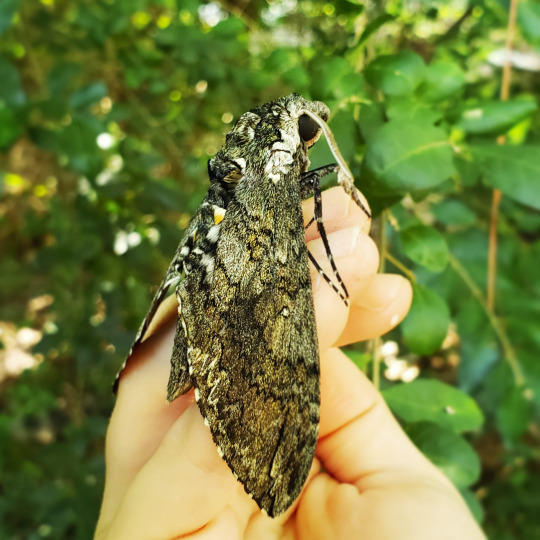
Pets this summer:
Mosquitofish
Larval newts
Various tadpoles
Leopard froglet
Physa snails and their billion eggs
Shrew
Common garden snails
Patent leather beetle
Two cicadas (morning & dog-day)
Feeder hornworms >> pupae >> hawk moths
Giant woolly bear caterpillar
Yellow striped army worm
Leopard slugs
Tiny tadpole -> tiny frog, species unknown
Crayfish
Dekay's Brown Snake
Wolf spider
Black Laceweaver spider
Earthworms
Carolina Mantis
Notable visitors:
Baby snapping turtle
Adult snapping turtle
Fledgling blue jay
Black wing damselfly
Backswimmer
Giant stag beetle
Eastern Bewick's wren
Truly excessive number of injured leopard frogs
American five-lined skink
Opossum
Raccoon
Red house finch
Cardinal
1 note
·
View note